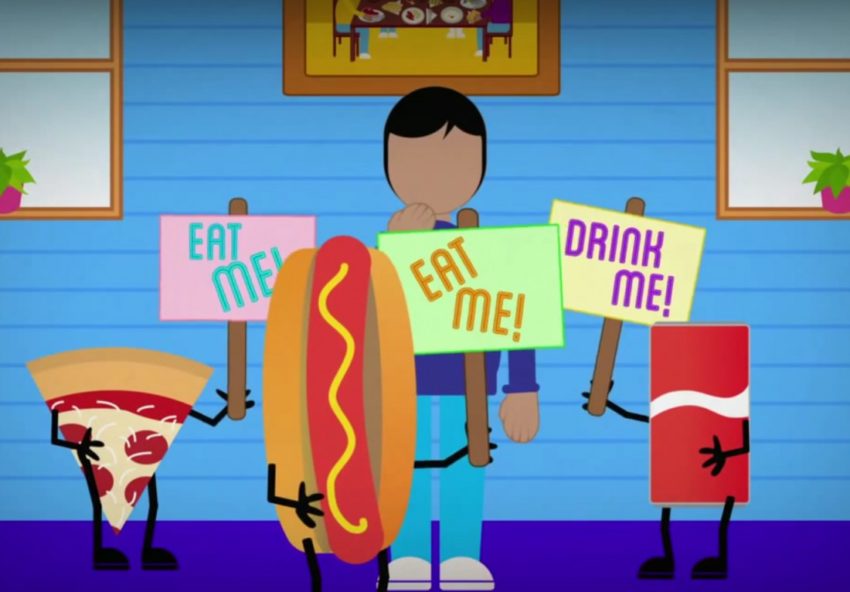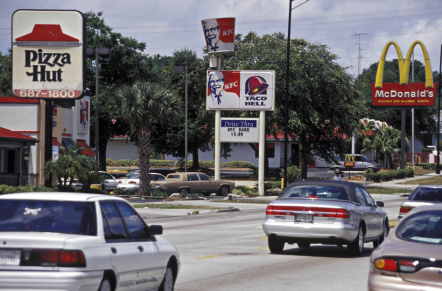
Share On Social!
Latino kids are heavily targeted by junk food and sugary drink marketing. The food industry even dresses up unhealthy options with ad visuals of nutrition and physical activity.
Marketing to kids is a big public health issue.
That’s why it’s important to check out new policy changes aimed at reducing unhealthy food and drink marketing, compiled in a brief from the UConn Rudd Center for Food Policy & Obesity.
Kate Bratskeir of Mic also recently imagined a world with no junk food marketing to kids, suggesting other key ways to reduce such marketing.
“Without change in advertising regulations, parents alone will struggle to raise children unaffected by food marketing,” writes Bratskeir.
Current Regulations in Other Countries
Bratskeir examined how some countries curbed junk food marketing to kids.
In the United Kingdom, she noted it’s illegal to advertise food and drinks with high levels of fat, salt, and/or sugar to viewers younger than 16.
Back in 1980, Quebec in Canada passed a law that prohibited junk food advertising to children younger than 13, resulting in one of the lowest rates of childhood obesity in the country.
In Mexico, where kids had seen more ads for junk food than those in any other country, officials implemented new guidelines to restrict TV ads for “high-calorie food and soft drinks” on afternoons and weekends to help fight obesity, according to Bratskeir.
Regulation in America: Voluntary Industry Policies
The Rudd Center’s new brief shines a light on American policies.
For example, the Council of Better Business Bureau’s Children’s Food and Beverage Initiative (CFBAI) is a voluntary, self-regulated program created in 2006 in the United States. Members include more than a dozen big food brands, such as Burger King, McDonald’s, Nestle, and Pepsi Co. The CFBAI aims to promote only healthier dietary choices in child-directed advertising, according to the brief.

Additionally, the American Beverage Association (ABA) company members have vowed to only market 100% fruit juice, water, and milk-based products in child-directed advertising in broadcast, print and digital media, and cinema, as well as primary schools.
Applebee’s, Burger King, Dairy Queen, McDonald’s, and Wendy’s pledged to remove all sugary drinks from their kids’ meal menus. Arby’s and Jack-in-the-box followed.
Government Regulation in America: Federal, State, and Local
The brief also highlights other key areas.
Federal: In July 2016, the USDA released the final regulation for local school wellness policies. Any school district that is participating in the federal school meals program were mandated to update their school wellness policies to address unhealthy food advertising to students. Advertising of food and drinks that do not meet Smart Snack in School nutritional standards on school property during the school day is prohibited. Also, any food and beverage fundraiser on the school campus during school hours must follow the Smart Snacks nutritional standards. Though, some states have the authority to exempt a limited amount of fundraisers from these guidelines.
State: California and Louisiana are the only two states that have enacted food and beverage advertising policy change. In 2017, California enacted legislation prohibiting schools from marketing unhealthy food and/or beverages during the school day. Also in 2017, the Louisiana governor delivered an executive order for healthy vending requiring that all snacks and beverages sold in machines on state-owned or leased property must meet nutritional standards by July 2018.
Local: In 2016 & 2017, more than 15 local and county governments enacted healthy vending policies that require a certain percentage of food and beverage products sold in vending machines on municipal property meet the American Heart Association’s healthy workplace food and beverage recommendations or food service rules for federal facilities. This comprises of sodium and trans fat limits in vended items. Furthermore, 8 municipalities have passed laws relating to sugary drinks in restaurant kids’ meals (including Lafayette, Colorado in 2017 and Baltimore in 2018), and 6 municipalities passed an excise tax (intended to be paid by the wholesale distributors, thus increasing the shelf price and affecting the ability to price the sugary drink at low a price) ranging from 1 cent to 2 cents per ounce on sugary drinks.
The Future of Food & Beverage Advertising and Policy
Evidence has shown that the food industry self-regulation has not significantly enhanced the level of food marketing to children or the nutritional quality of child-directed food and drink. Government policies, at all levels, are necessary, according to the brief.
Bratskeir cited experts who said government may need to get involved, like in other countries.“When it’s self-regulation and pledges, there’s no enforcement.”
Learn more about marketing to Latinos:
By The Numbers
1
Supermarket
for every Latino neighborhood, compared to 3 for every non-Latino neighborhood



